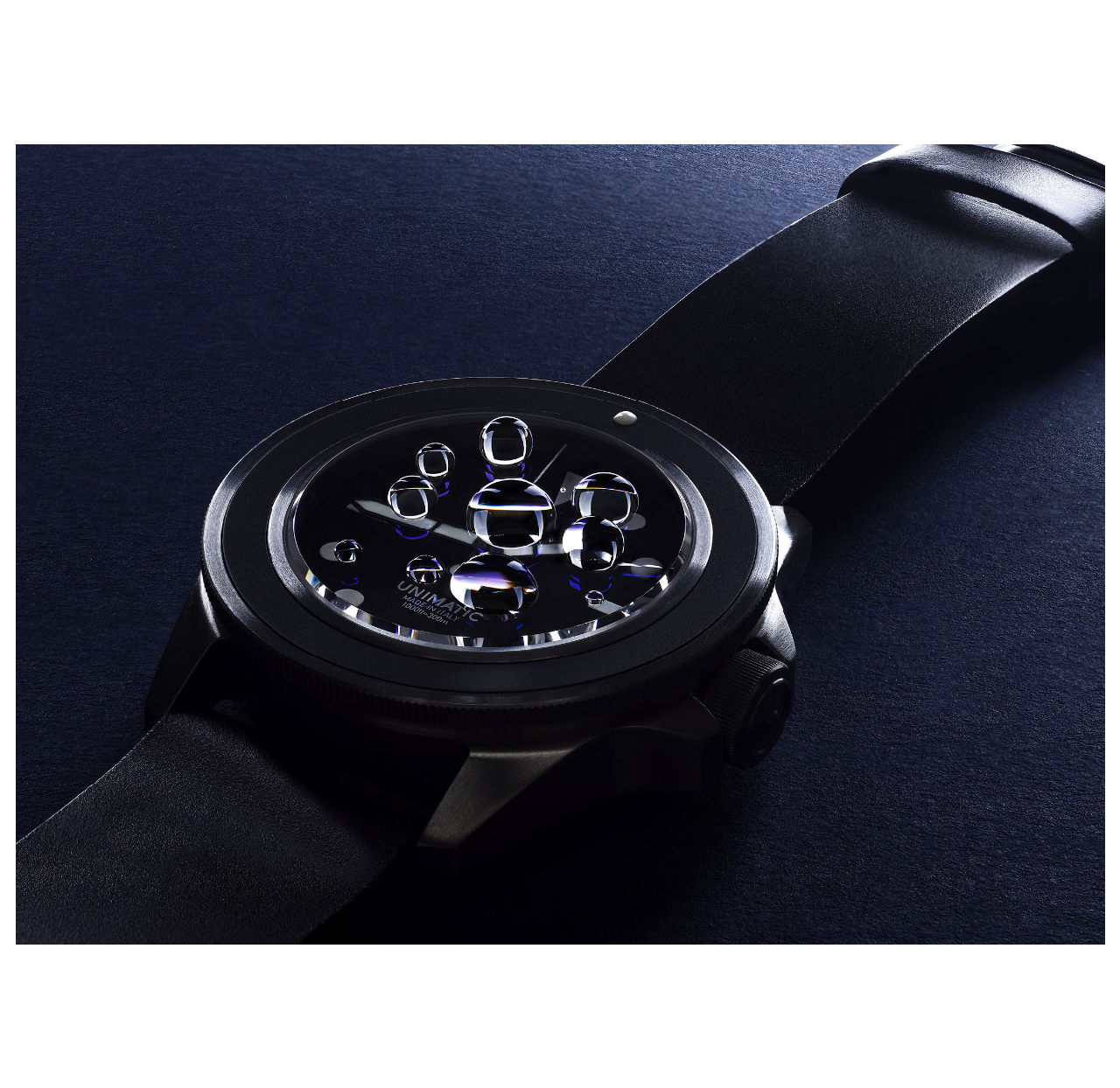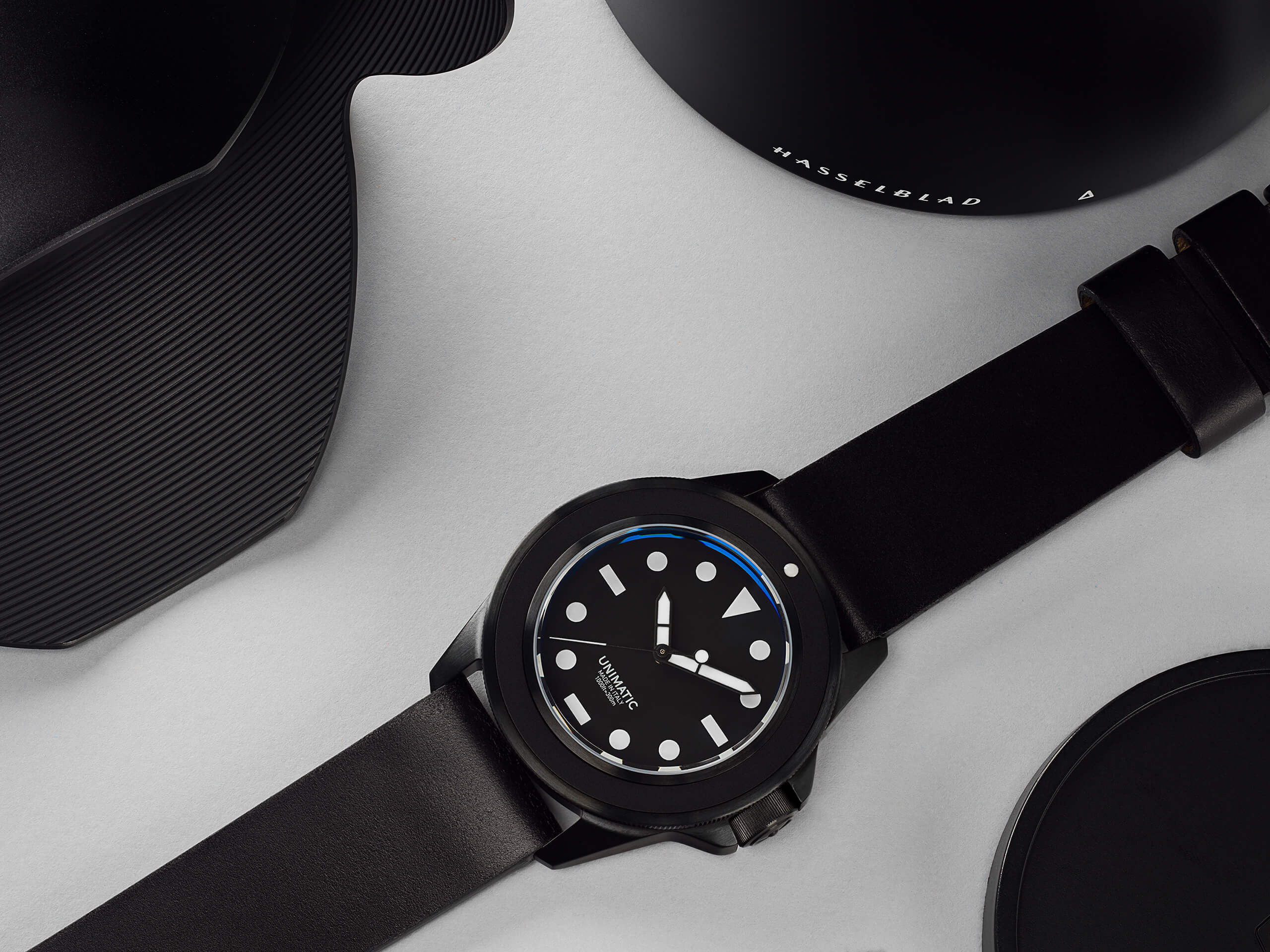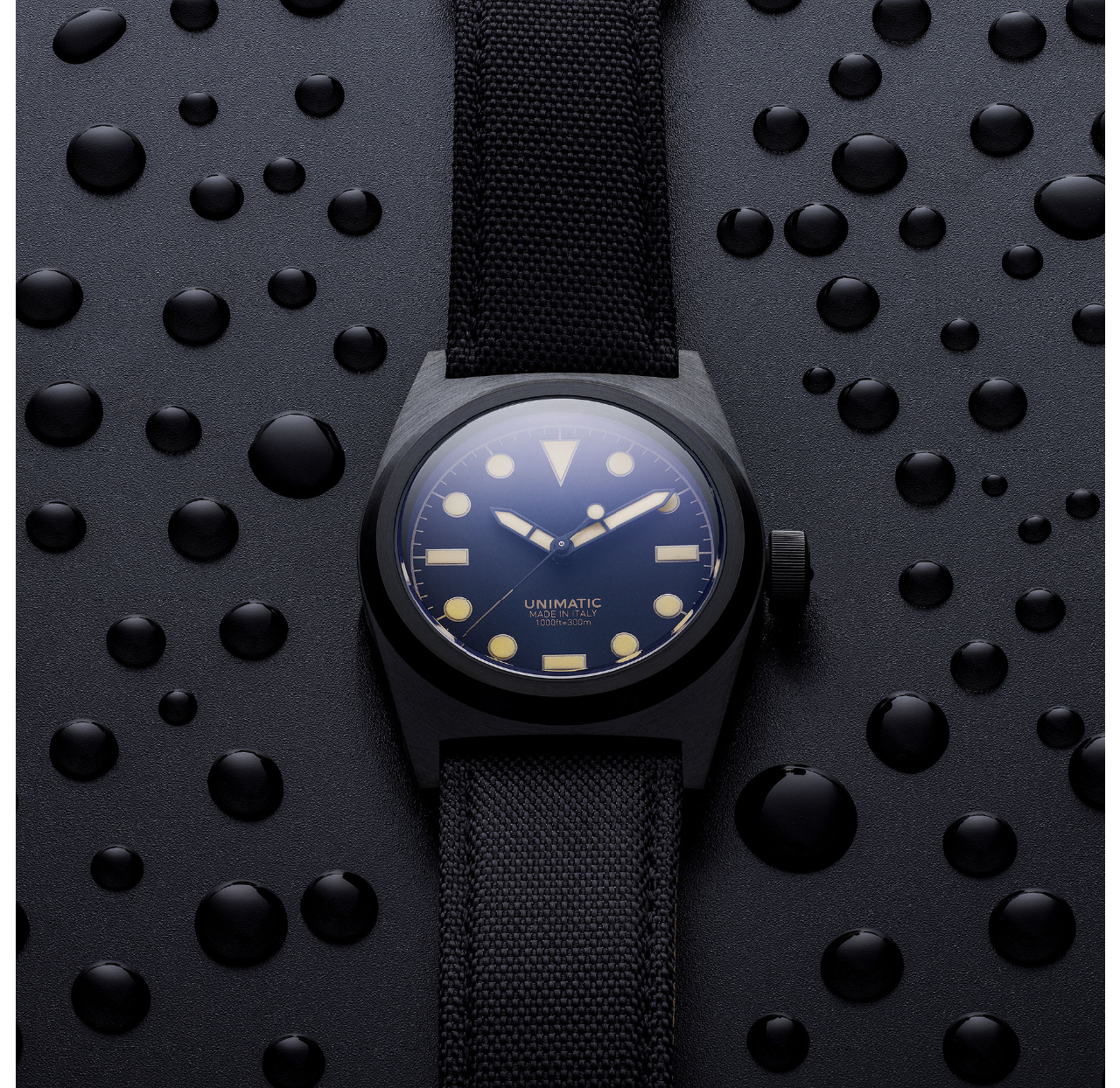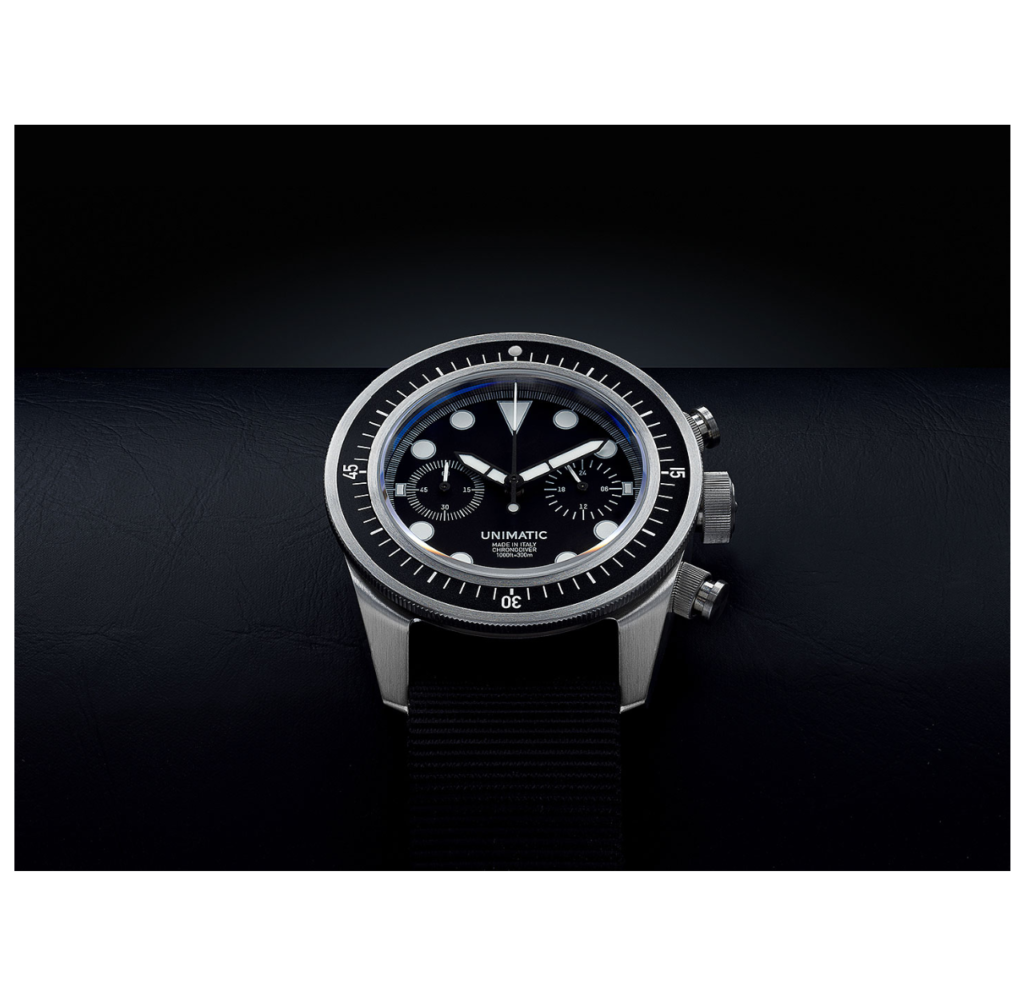CAPTURING THE DETAILS OF TIMEPIECES UNSEEN BY THE NAKED EYE•
This story appeared originally on hasselblad.com
Italy-based Unimatic Watches, known for their built-to-last quality, sleek design, and innovative solutions, have been shooting their product images with the Hasselblad H System since their inception in 2015. Regularly using a H3D-39 for this task, they decided to test out the H6D-100c and HC Macro 120mm to capture their newest line-up of timepieces. Getting the chance to speak to Unimatic Watches’ co-founder Simone Nunziato, who shot all the images on the H6D himself, he tells us all about the outstanding capabilities of using the H6D-100c to carry out the extremely difficult task of photographing watches and all their minuscule details.
TELL US A BIT BEHIND UNIMATIC WATCHES AND ITS HISTORY.
Unimatic was born as a continuous watchmaking research lab to offer unique watches that combine good design, iconic elements and the latest technical solutions. Our watches are made in Italy and built to last. The brand was founded by Giovanni Moro and myself, Simone Nunziato, both trained as an industrial designer at “Politecnico di Milano” where we met and shared a common interest and passion in wrist watches amongst other things. We started Unimatic in 2015 with our first product “Modello Uno”. Since then we have expanded our product line-up to include a field watch and a chrono-diver, all water resistant to 300 meters. In order to deliver a unique product experience, our watches are engraved individually with a progressive serial number with the total quantity of the particular reference produced. Once the references are sold out the same design will never be reproduced again.
HOW WAS YOUR EXPERIENCE SHOOTING YOUR LATEST COLLECTION WITH THE H6D-100C AND ITS FINAL RESULTS?
The H6D offers outstanding image quality and colour accuracy. It allowed us to capture an insane amount of details which is very important in the field of watch photography as each image must clearly present all the details that make up a watch. The wider depth of field in the H6D allows for a greater sharpness in the image and the outstanding quality of the HC Macro 120mm lens allows you to capture every single – even the smallest – details of the watch, which would be difficult to see even with the naked eye.
HOW DID YOU ACHIEVE YOUR FINAL IMAGES USING FOCUS STACKING WITH THE H6D?
The vast majority of our studio images are shot using focus stacking. This technique comprises combining multiple individually shot images to create a final image with a greater depth of field. This results in a final image that possesses perfectly focused details throughout. The steps include shooting multiple progressive images of a watch from the near focus to the far focus plane and stacking them together in a linear arrangement combining just the focused part of each image together using a software. Whilst being technically more difficult, it allows us to visually achieve the most desired outcome. Thanks to the outstanding sharpness of Hasselblad cameras, the multiple images always align perfectly in post-production and no details are lost.
HOW MUCH RE-TOUCHING WAS ACTUALLY NECESSARY FROM THE FINAL IMAGE RESULTS?
After focus stacking, some retouching is inevitably required at this macro level. Usually the most recurring task is trying to hide dust specks captured by the camera. Thankfully having so many sharp pixels to play with, retouching the images taken with Hasselblad cameras are fairly simple and some of the tasks can be easily automated with filters.
AS YOU REGULARLY SHOOT YOUR CONTENT WITH AN H3D-39, WHAT DIFFERENCE COULD YOU SEE IN THIS SET OF IMAGES WHEN USING THE H6D-100C?
The main practical difference that stood out to us was the touch screen on the back which made the shooting process much smoother by allowing us to do small but important and often repetitive tasks, such as quickly checking the images and setting everything up to shoot, without having to go to the computer screen every single time. Having so many pixels in each image is, of course, amazing, but another aspect we were quite impressed with was how the camera managed highlights and very dark areas in the dial, balancing it out nicely, giving credit to its uniquely wide dynamic range.
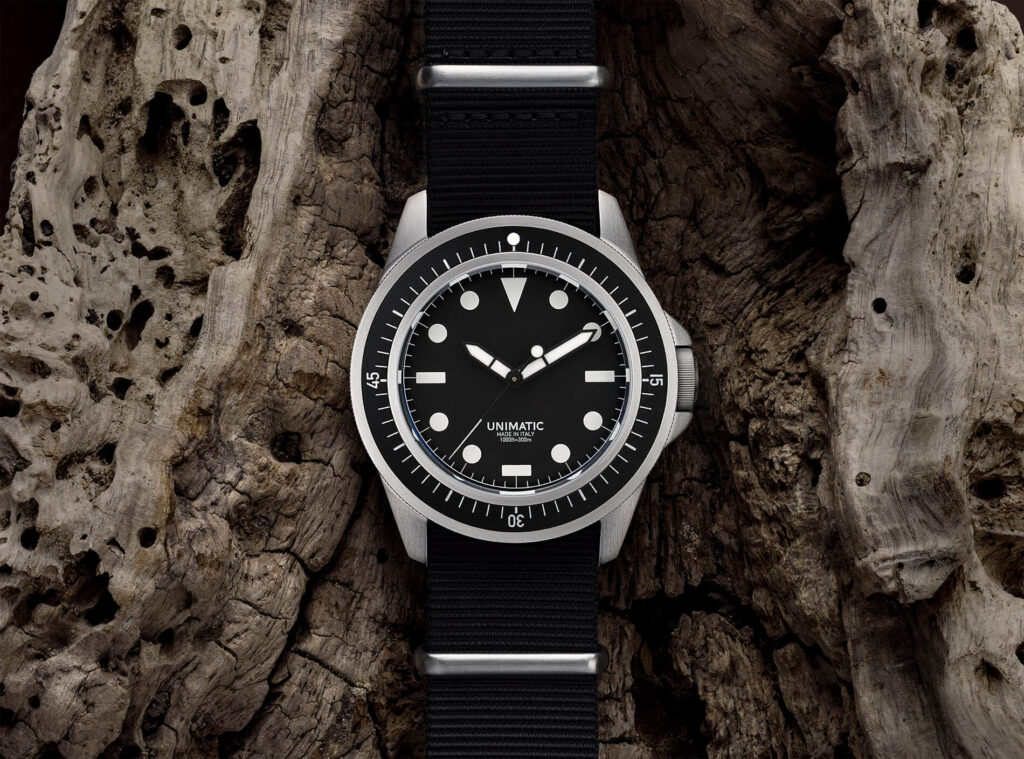
SHOOTING WITH AN H3D FROM THE START, WHAT MADE YOU CHOOSE TO USE HASSELBLAD IN THE FIRST PLACE WHEN SHOOTING YOUR PRODUCTS?
Hasselblad medium format has always been our preferred camera for studio images of our products given the impressively high fidelity of the colours and all the details it is able to capture. Shooting watches is a very difficult task and presents many difficult challenges. Using the H3D helped us a lot in delivering results that meet our standard with the highest satisfaction. Given the high level of detail in our watches, it feels like Hasselblad was the perfect companion to capture and communicate the quality that our products deliver.
To stay always up to date with our articles and watch drops, please subscribe to our newsletter below.


